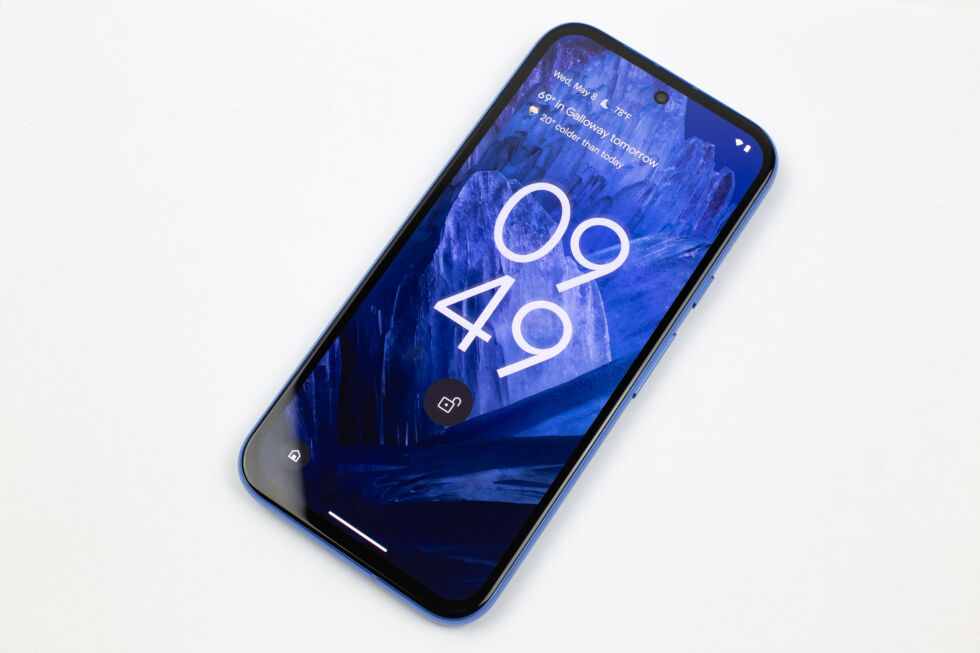-

The Pixel 8a and its speedy 120 Hz display. [credit: Ron Amadeo ]
| SPECS AT A GLANCE: Pixel 8a | |
|---|---|
| SCREEN | 6.1-inch, 120 Hz, 2400×1080 OLED |
| OS | Android 14 |
| CPU | Google Tensor G3
One 3.0 GHz Cortex-X3 core |
| GPU | ARM Mali-G715 |
| RAM | 8GB |
| Storage | 128GB, UFS 3.1 |
| Battery | 4492 mAh |
| NETWORKING | Wi-Fi 6E, Bluetooth 5.3, GPS, NFC |
| PORTS | USB Type-C 3.1 Gen 1 with 18 W USB-PD 3.0 charging |
| CAMERA | 64MP main camera, 13 MP Ultrawide, 13 MP front camera |
| SIZE | 152.1 x 72.7 x 8.9 mm |
| WEIGHT | 188 g |
| STARTING PRICE | $499.99 |
| OTHER PERKS | IP67 dust and water resistance, eSIM, in-screen fingerprint reader, 5 W wireless charging |
Somehow, Google's midrange phone just keeps getting better. The Pixel 8a improves on many things over the Pixel 7a—it has a better display, a longer support cycle, and the usual yearly CPU upgrades, all at the same $499 price as last year. Who could complain? The Pixel A series was already the best bargain in smartphones, and there's now very little difference between it and a flagship-class device.
Year over year, the 6.1-inch, 2400×1080 display is being upgraded from 90 Hz to 120 Hz, giving you essentially the same experience you'd get on the "flagship" Pixels. The SoC is the same processor you'd get in the Pixel 9, a Google Tensor G3. That's a 4 nm chip with one Arm Cortex X3, four Cortex A715 cores, four Cortex A510 cores, and a Mali G715 GPU.
Previously, the 120Hz display was the primary thing A-series owners were missing out on compared to the more expensive Pixels, so its addition is a huge deal. Any comparison between the "midrange" Pixel 8a and the "flagship" 6.2-inch Pixel 8 will now just be splitting hairs. The flagship gets an extra 0.1 inches of display, 2 percent more battery, and Wi-Fi 6E instead of Wi-Fi 7. The cameras are technically newer, but since they all run the same image-stacking software, the images look very similar. Are those things worth an extra $200? No, they are not.



0 Comments